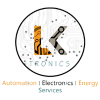A Programmable Logic Controller, or PLC, is a ruggedized computer used for industrial automation. These controllers can automate a specific process, machine function, or even an entire production line.
PLC
Showing 1–15 of 36 results
-
-
-
PLC
FX2N-16EX-ES/UL Mitsubishi Electric Input Module Extension Block
මෙම අයිතමය අපගේ වෙබ් අඩවියෙහි Shipping from Overseas
සේවාව යටතේ ගෙන්වන බැවින් මෙය ඔබ හට ලැබීමට
වැඩ කරන දින 10 – 20 පමණ ගත වේ.
මෙම අයිතමය ඔබ ඇනවුම් කල පසු මෙහි සියලුම යාවත් කාලීන කටයුතු e-mail මගින් සිදු කෙරේ
ස්තූතියි!SKU: LKIA00091 -
PLC
Mitsubishi FX3U Logic Module – 32 Inputs, 32 Outputs, Relay, Computer, HMI Interface
මෙම අයිතමය අපගේ වෙබ් අඩවියෙහි Shipping from Overseas
සේවාව යටතේ ගෙන්වන බැවින් මෙය ඔබ හට ලැබීමට
වැඩ කරන දින 10 – 20 පමණ ගත වේ.
මෙම අයිතමය ඔබ ඇනවුම් කල පසු මෙහි සියලුම යාවත් කාලීන කටයුතු e-mail මගින් සිදු කෙරේ
ස්තූතියි!SKU: LKIA00090























